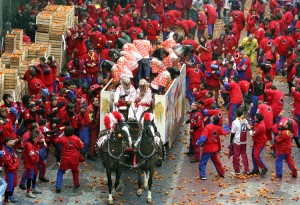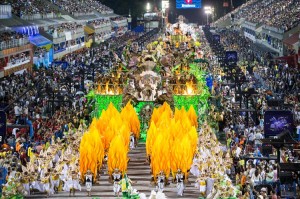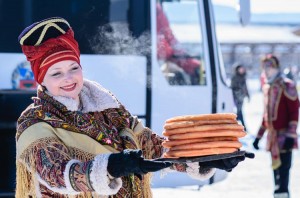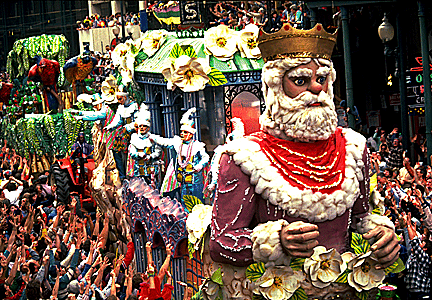Italy’s Battle of the Oranges
Tuesday, February 13th, 2018February 13, 2018
Today, February 13, people in Ivrea, Italy, wrapped up the Battaglia delle Arance (Battle of the Oranges), the traditional end of the city’s Carnival celebrations and the nation’s largest fruit fight. Ivrea is a town near Turin in the Piemonte (Piedmont) region of northwestern Italy. The messy three-day battle uses up more than 550,000 pounds (250,000 kilograms) of oranges, and stems from a revolt against an unpopular lord of Ivrea some 800 years ago.

People of Ivrea, Itlay, defend the town against “an invasion” of the lord’s aranceri (orange throwers) during the annual Battle of the Oranges. Credit: © Pecold/Shutterstock
According to legend, sometime around the year 1200, the lord of Ivrea tried to force his romantic attentions on a local miller’s daughter (known as Violetta) on the eve of her wedding to someone else. The bride-to-be did not take kindly to the lord’s actions. Instead of submitting to his advances, Violetta killed him. The townspeople, fed up with years of oppression, rallied around the miller’s daughter, defeated the lord’s soldiers, and then stormed and burned the lord’s palace.
The people of Ivrea began celebrating their liberation with an annual event that was eventually tied to the end of carnival. Different missiles have been used to “re-create” the battle over the years, including beans and apples (representing arrows). Oranges—still a bit hard, prompting many people to wear protective helmets and masks—have been the battle’s ammunition since the late 1800′s.
Today, a horse-drawn cart loaded with the lord’s aranceri (orange throwers) runs the gauntlet of Ivrea’s streets three days in a row. The lord’s aranceri, protected in plastic “suits of armor,” are pummeled with oranges as they navigate the town streets—but they too throw oranges, and the entire scene is soon one of citrus carnage. Teams of orange throwers on foot defend different parts of the town, and each is identified by medieval uniforms and even coats of arms. Nets protect local store fronts and non-participants from wayward citrus fruit missiles. The oranges, imported from the southern Italian island of Sicily, are the remnants and rejects of the winter harvest. La Mugnaia (the miller’s daughter) Violetta, played by a local woman dressed in red and white, oversees the activities, hands out sweets to children, and throws flowers to admirers. A symbolic funeral ends the battle on Shrove Tuesday, followed by a more traditional parade of bands and floats.
The week-long Carnevale di Ivrea celebration draws some 100,000 people each year. Carnival is a lively time of dancing, feasting, music, pageants, and parades prior to the beginning of Lent, a strict religious season observed in the spring by most Christians. People celebrate Carnival around the world. The largest and most famous Carnaval draws millions of people each year to Rio de Janeiro, Brazil. In the United States, the best-known Carnival is held in New Orleans, Louisiana—an event capped by the city’s famous celebration of Mardi Gras (French for Fat Tuesday).





